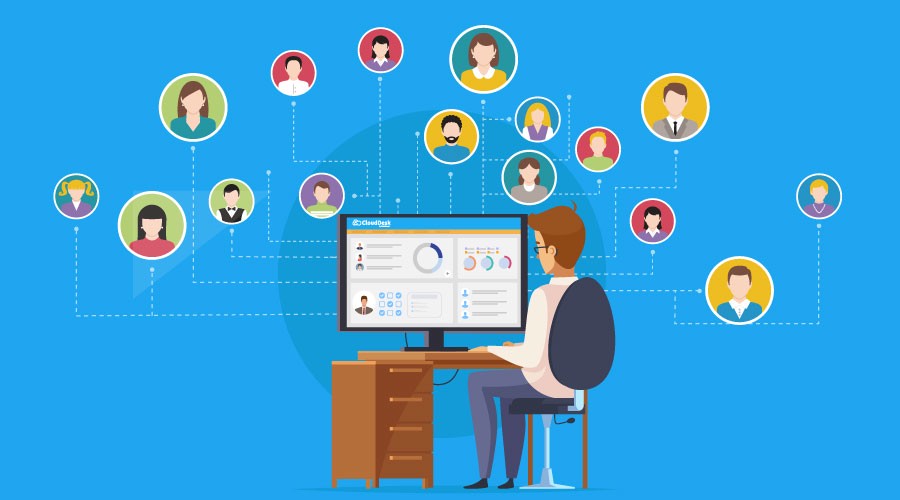Monitoring the effectiveness of one's staff has long been a vital activity. But, using conventional approaches will not provide you with the data-driven solutions that you want. The following outlines how workforce analysis may be of use. We are well aware of the significance of keeping tabs on the productivity of our staff members. It is crucial to comprehend the level of worker involvement. It guarantees that all employees of the workforce receive the help they need to do their excellent work.
Additionally, it improves the outcomes of the company. Yet, the majority of the conventional approaches to monitoring the work of employees are not suitable for the businesses that exist in the present day. The great news is that you do not need to continue using these strategies. Through the help of modern worker monitoring tools, you will be able to shift closer to the long term in terms of measuring the productivity of your workforce.
In this section, we will discuss some of the methods that managers used in the old days to measure individual efficiency and efficacy indicators. After that, we'll get into the reasons why these strategies aren't the most practical alternatives in the modern-day corporate sector. Data-driven approaches may deliver the precise, quantitative, and precise data you need. When you've finally read this, you'll gain a greater grasp of the optimal methods for measuring and valuing the productivity and performance of each worker, so you'll be able to put that knowledge into practice.
Monitoring Worker Productivity in the Past
Monitoring the work of staff members should be at the centre of every endeavor to boost efficiency. You will be unable to devise a strategic plan to improve work engagement unless you have a good idea of how they currently stand in regards to their output. Observing the actions of your staff members and gaining a better understanding of their workflow is the only method to do this goal. Besides, there is a tremendous opportunity for advancement in how supervisors and team members used to supervise people.
You may divide conventional methods of measuring employee productivity into 4 major areas, which are as follows:
Inquiring around
Asking customers, collaborators, as well as other supervisors, to report their opinions to specific workers throughout the shift is an archaic method of acquiring information. One of the most significant drawbacks of using this strategy is that everything you hear will be dependent on your perspective. As a result, it's doubtful that you'll come up with any thoughts that you can put into practice. Checking around might often place your workers in the uncomfortable circumstance of having to provide information on other individuals in their group in an unfamiliar situation. This is not an effective strategy for building a cohesive staff or boosting morale. Input from all angles is a slight bit more beneficial. But, if your company's units are more vague and ambiguous, it might be difficult to determine who ought to be reviewing whom.
The Use of Self-reporting or Questionnaires
Not just executives and supervisors in the C-suite are accountable for increasing efficiency; everyone in the company is. Workers are capable of taking accountability for their work when they self-report their progress and take part in individual progress evaluations. They can devise ways for managing both their tasks and the products that are most effective for them. But, it is not at all unusual for individuals to downplay or overstate their competence in particular domains. Or they may exaggerate their productivity simply because they are anxious that it is not up to the standards set for them. Thus, using self-monitoring as a method to measure employee productivity is not a trustworthy option.
Comparing One's Production to Their Efficiency
Since it is so simple, many administrators choose to employ this strategy. If production is increasing, then everything is going well and management must keep performing what they've been doing. If production is decreasing, then staff efficiency and competence ought to be declining, and it is necessary for action. The issue with this is that there isn't a significant amount of detail here, which is problematic. If you just focus on results, you run the risk of missing out on certain critical elements, such as when employees get burned out or when procedures are wasteful.
One-on-one discussions
Having regular gatherings helps to establish unity. It guarantees that everybody is on the same page about the objectives. Also to this, it allows for a continuous flow of input to and from the workforce. You will be able to take these discussions to a higher level if you have data. It has the potential to provide extra insights that can you can put to use.
What Are Some Drawbacks to Using Conventional Monitoring Systems?
You require quantifiable data to assess employee productivity. Worker tracking is the sole way to get this information in the businesses of today, which are electronic and distant.
One-on-one sessions are the most appropriate method of measuring employee productivity for a contemporary and responsible business when compared to the other ways described above. One-on-one meetings are a great way to get to know your staff. They will have the opportunity to express their issues as a result of this. They are also an excellent approach to collecting recommendations on how to enhance your workplace climate straight from the origin. This is a significant benefit.
Besides the conventional method of one-on-one meetings, a contemporary strategy for efficiency is necessary. Use your one-on-one check-ins more efficiently using workplace analytics insights. You are free to direct your attention to the most important information.







